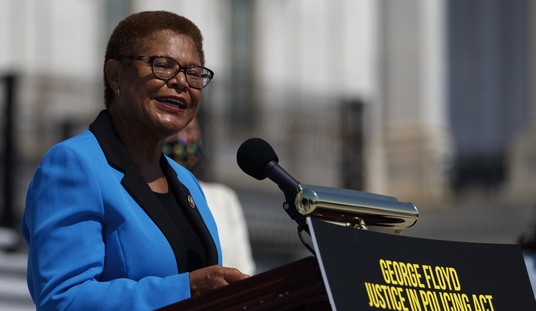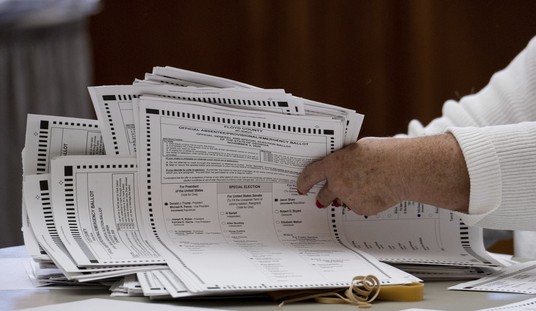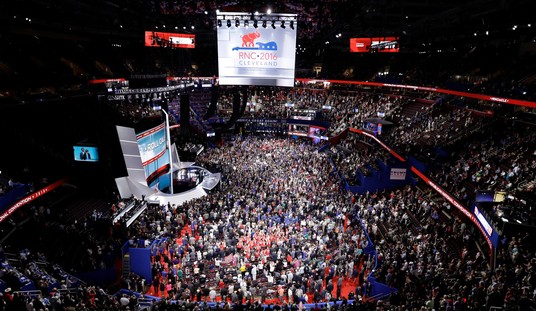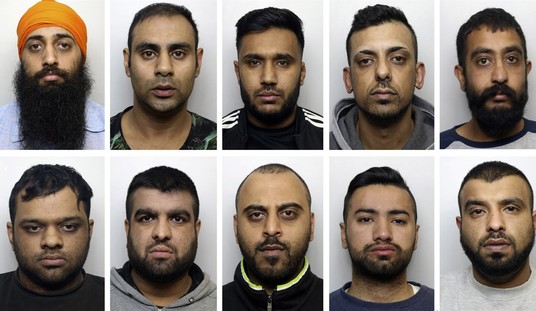During a recent John Stossel show on gun control, Brady Campaign Vice President Dennis Henigan presented his case for “reasonable” gun control laws.
Henigan cited last year’s murder of four police officers in Lakewood, Washington, as proof that mass murders occur in non-gun free zones. One incident in the face of a majority of active shootings occurring in gun-free zones isn’t evidence of a trend, especially since that particular tragedy was the result of a justice system failure to keep a violent felon in prison. The justice system presumes future innocence even when cases like this indicate otherwise.
On the other hand, Henigan’s idea of justice for law-abiding gun owners is the presumption of guilt until they prove innocence by getting investigated by police prior to buying guns (licensing) and then keeping tabs on the suspected gun owner/criminal by maintaining a list of guns owned (registration).
Henigan considers all this “reasonable.”
He also called Washington, D.C., a “city” in order to invalidate crime comparisons between D.C. and the 50 states. However, in 2007, D.C. Mayor Fenty stated during his inauguration:
Together, we pledge, steadfastly, that our goal is to become the 51st State. None of us can, or should, rest easy until we all have the opportunity to participate fully in our great democracy.
Via their duly elected representative, D.C. residents declared their desire to be recognized as a state. In keeping with democratic (small d) values, it’s reasonable to compare D.C. to other states.
In 2008, D.C. had 3.2 and 5.9 times the violent crime and murder rates, respectively, of the rest of America.
Also, D.C. has a larger population than Wyoming, which has the highest gun ownership rate, plus below-average murder and violent crime rates. Anti-rights groups commonly trim the national dataset in order to create numbers supporting their rhetoric.
Henigan also declared that it’s “absolutely false” that the Brady Campaign is trying to take away Americans’ right to own guns. But the following data indicate it’s his assertion that’s “absolutely false.”
The Behavioral Risk Factor Surveillance System (BRFSS) is “operated by state health departments in collaboration with the U.S. Centers for Disease Control and Prevention,” a department in the Centers for Disease Control (CDC). BRFSS state-level gun ownership surveys for 2001 and 2002 are available online. (Includes D.C.)
Beginning in 2001, the Brady Campaign published annual “report cards” grading states on their gun control laws. Brady’s “A” states had the most gun control, while “F” states had the least.
After collating Brady grades with the BRFSS data, interesting correlations appear:
- Brady’s favorite (A) states average the lowest gun ownership rates.
- Brady’s “worst” (F) states average the highest gun ownership.
- As grades drop from A to F, gun ownership consistently rises.
| Brady Grades Versus Gun Ownership Rates | ||
| Grade | Average Percent Gun Ownership | |
| 2001 | 2002 | |
| A | 14.0 | 13.8 |
| B | 20.4 | 23.3 |
| C | 39.2 | 40.4 |
| D | 41.7 | 42.7 |
| F | 51.0 | 53.4 |
Brady’s “A” states were the only group with decreasing gun ownership rates from 2001 to 2002, indicating that gun control laws may make it harder and/or more expensive for law-abiding citizens to purchase firearms: if people either don’t bother or move to gun-friendly states seeking more liberal gun rights, ownership rates decline over time.
Despite Henigan’s denial, his “reasonable gun restrictions” correlate with reduced gun ownership.
After collating gun ownership rates with FBI violent crime rates, other interesting correlations appear:
- As gun ownership levels increase, Brady grades decrease.
- States with higher gun ownership levels have less violent crime and murder.
| Gun Ownership vs. Brady, Violent Crime, Murder | ||||||
| Percent Gun Ownership |
2001 | 2002 | ||||
| Ave.
Grade |
FBI Rates | Ave.
Grade |
FBI Rates | |||
| Violence | Murder | Violence | Murder | |||
| Under 30% | B+ | 610.0 | 7.6 | B+ | 599.7 | 8.2 |
| 30-40% | D+ | 424.5 | 4.9 | D+ | 422.4 | 5.0 |
| 40-50% | D+ | 410.7 | 4.9 | D+ | 406.5 | 4.8 |
| Over 50% | D- | 319.6 | 4.2 | D- | 314.8 | 3.9 |
Brady’s “reasonable” gun control correlates with reduced gun ownership and higher rates of overall violence and murder.
Collating gun ownership rates with Centers for Disease Control (CDC) homicide data underscores the above conclusions:
- States with the lowest firearms ownership average the highest firearm and non-firearm homicide rates.
- As firearms ownership rates increase, homicide rates generally decrease.
- States with the highest gun ownership have the lowest firearms homicide rates.
| Gun Ownership vs. CDC Homicide Rates | ||||||
| Pct. Gun Ownership |
2001 | 2002 | ||||
| Total | Firearm | Non-FA | Total | Firearm | Non-FA | |
| Under 30% | 9.32 | 4.90 | 4.42 | 8.09 | 5.61 | 2.47 |
| 30-40% | 5.52 | 3.31 | 2.20 | 5.47 | 3.46 | 2.01 |
| 40-50% | 5.63 | 3.58 | 2.04 | 5.24 | 3.49 | 1.75 |
| Over 50% | 5.12 | 3.22 | 1.90 | 5.22 | 3.18 | 2.04 |
(Note: the CDC collects information from death certificates, while the FBI collects data from law enforcement agencies.)
The Brady Campaign “opposes state laws or a national law” legalizing shall-issue concealed carry laws — or “right-to-carry” laws (RTC) — where law enforcement must issue a license unless there’s evidence that the applicant is a criminal or a danger to himself or others.
According to Brady rhetoric, RTC states should be more dangerous. But actual FBI and CDC data prove otherwise.
- RTC states: more guns at home and in public; less violent crime and murder.
| Right-to-Carry vs. Brady, Pct Gun Ownership, FBI Violent Crime, Murder | ||||||||
| 2001 | 2002 | |||||||
| Ave.
Grade |
PGO | FBI Rates | Ave.
Grade |
PGO | FBI Rates | |||
| Violence | Murder | Violence | Murder | |||||
| RTC | D | 43.0% | 404.4 | 5.0 | D | 44.7% | 398.7 | 4.8 |
| Non-RTC | B- | 26.8% | 509.4 | 6.1 | B- | 27.8% | 503.5 | 6.6 |
- RTC states have lower firearms and non-firearms homicide rates.
| Right-to-Carry vs. Brady, Pct Gun Ownership, CDC Homicide | ||||||||
| 2001 | 2002 | |||||||
| Ave.
Grade |
PGO | CDC Homicide | Ave.
Grade |
PGO | CDC Homicide | |||
| Firearm | Non-FA | Firearm | Non-FA | |||||
| RTC | D | 43.0% | 3.60 | 2.15 | D | 44.7% | 3.59 | 1.91 |
| Non-RTC | B- | 26.8% | 4.00 | 3.40 | B- | 27.8% | 4.48 | 2.25 |
Brady’s McDonald brief claimed that “an increase in gun prevalence causes an intensification of criminal violence — a shift toward greater lethality, and hence, greater harm to the community.”
Brady argued for “reasonable” Second Amendment restrictions that should be addressed “in the political arena, without courts second-guessing reasoned legislative judgments.”
Curiously, this same argument was one of the motives for the Fourteenth Amendment: to protect against legislative attempts to curtail citizens’ basic rights. Since American gun control includes a history of legislative attempts to oppress American citizens of African descent, Brady’s “reasonable” argument merits further attention.
When Brady’s grades were collated with CDC firearm and non-firearm homicide rates for Americans of African descent:
- Brady’s favorite states experienced the highest rates of homicide.
- The general trend indicates that as Brady grades decline, so do homicide rates.
- Brady’s “worst” states experienced the lowest rates of firearms and non-firearms homicide.
| Brady Grades Versus CDC African American Homicide Rates | ||||||
| Grade | 2001 | 2002 | ||||
| Total | Firearm | Non-FA | Total | Firearm | Non-FA | |
| A | 22.62 | 17.26 | 5.37 | 23.35 | 17.78 | 5.56 |
| B | 20.39 | 12.73 | 7.66 | 21.88 | 16.54 | 5.34 |
| C | 19.66 | 14.23 | 5.42 | 18.45 | 13.93 | 4.52 |
| D | 16.83 | 12.60 | 4.23 | 17.24 | 11.99 | 5.25 |
| F | 11.96 | 9.94 | 2.02 | 11.43 | 8.75 | 2.67 |
These data show that law-abiding Americans are safest where they have the easiest access to firearms, rendering Henigan’s premise invalid.








Join the conversation as a VIP Member